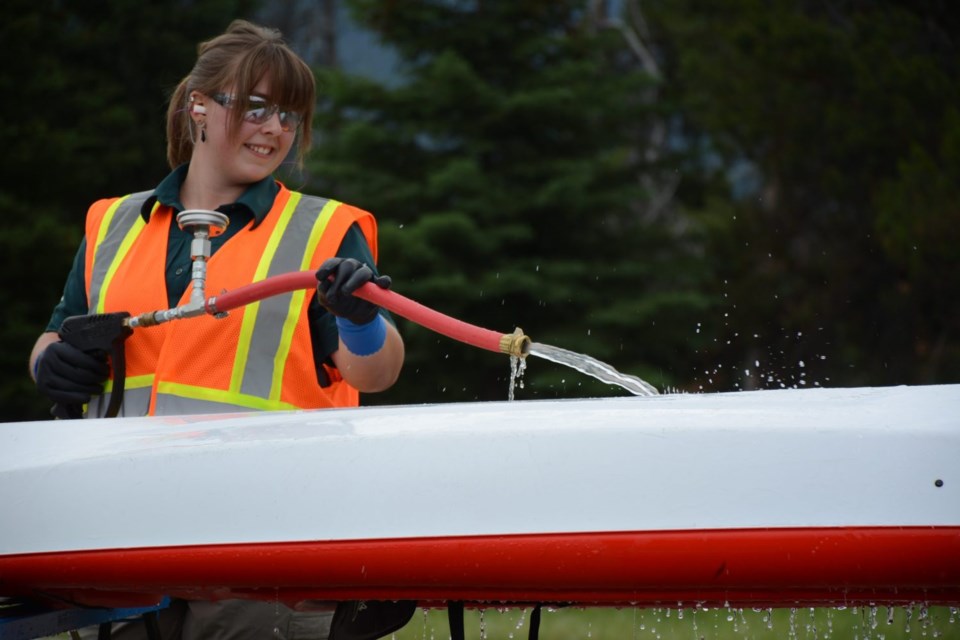Scott Hayes | [email protected]
Local Journalism Initiative Reporter
Keeping aquatic invasive species out of Jasper National Park is easy as long as every person cleans, drains and dries their watercraft after every outing.
To drive home that message, Parks Canada is offering new summertime services including having staff rotating around several high-use water bodies to educate visitors on the risks and about what they can do.
“We really want to make sure that anyone coming from outside of the park has their watercraft clean, drain, dry before they enter any of the lakes,” said Christopher Waldinsperger, program co-ordinator for aquatic invasive species prevention.
“And then it also stays true, though, for visitors and residents – people who live in the park and just recreate within the park – that it's a good best practice as they're moving between water bodies to clean their watercraft.”
More specifically, watercraft should be dry for at least 48 hours (or at least 30 days after use in the United States or provinces other than British Columbia, Alberta and the territories).
Motorists with either non-motorized or electric-propelled watercraft on Highway 16 can turn off at Cottonwood Creek Road to visit Parks Canada’s temporary aquatic invasive species inspection station and boat wash.
There, you can get your watercraft cleaned off while learning about the two biggest threats to Jasper National Park’s water bodies: Zebra mussels and whirling disease. There are other species of concern as well, including plants Northern crayfish and Eurasian milfoil.
Thankfully, they haven’t invaded here yet.
“They're not in the park so this program that we're running is geared to be preventative: trying to prevent aquatic invasive species that are not found in the park from entering the park,” Waldinsperger said.
If they did enter, the fallout would be catastrophic up and down both the food chain and the water chain, he said.
“They're filter feeders so they will go in and completely take over the ecosystem. They have no natural predators. They would enter and they would just start destroying every microorganism and organism in the lake and then it spreads through the entire food web.
“If the fish start dying, it can impact everything else. It has an ecological impact that’s huge. We’re the headwaters of the Athabasca River and the watershed heading all the way regionally through the province. If it starts here, it's going to impact everyone downstream, which could have huge impacts on infrastructure and agriculture.”
It would also have huge recreational impacts as the shorelines would be covered with sharp shells.
All of that is entirely preventable if everyone takes a few minutes to properly clean, drain and dry their watercraft.
“There's lots of threats that are possible from coming into the park and we're certainly trying to do our best to prevent them,” Waldinsperger said.
The inspection station will be operational from 8:30 a.m. to 7 p.m. until Sept. 5, and then from 8:30 a.m. to 3:30 p.m. until Oct. 9.




